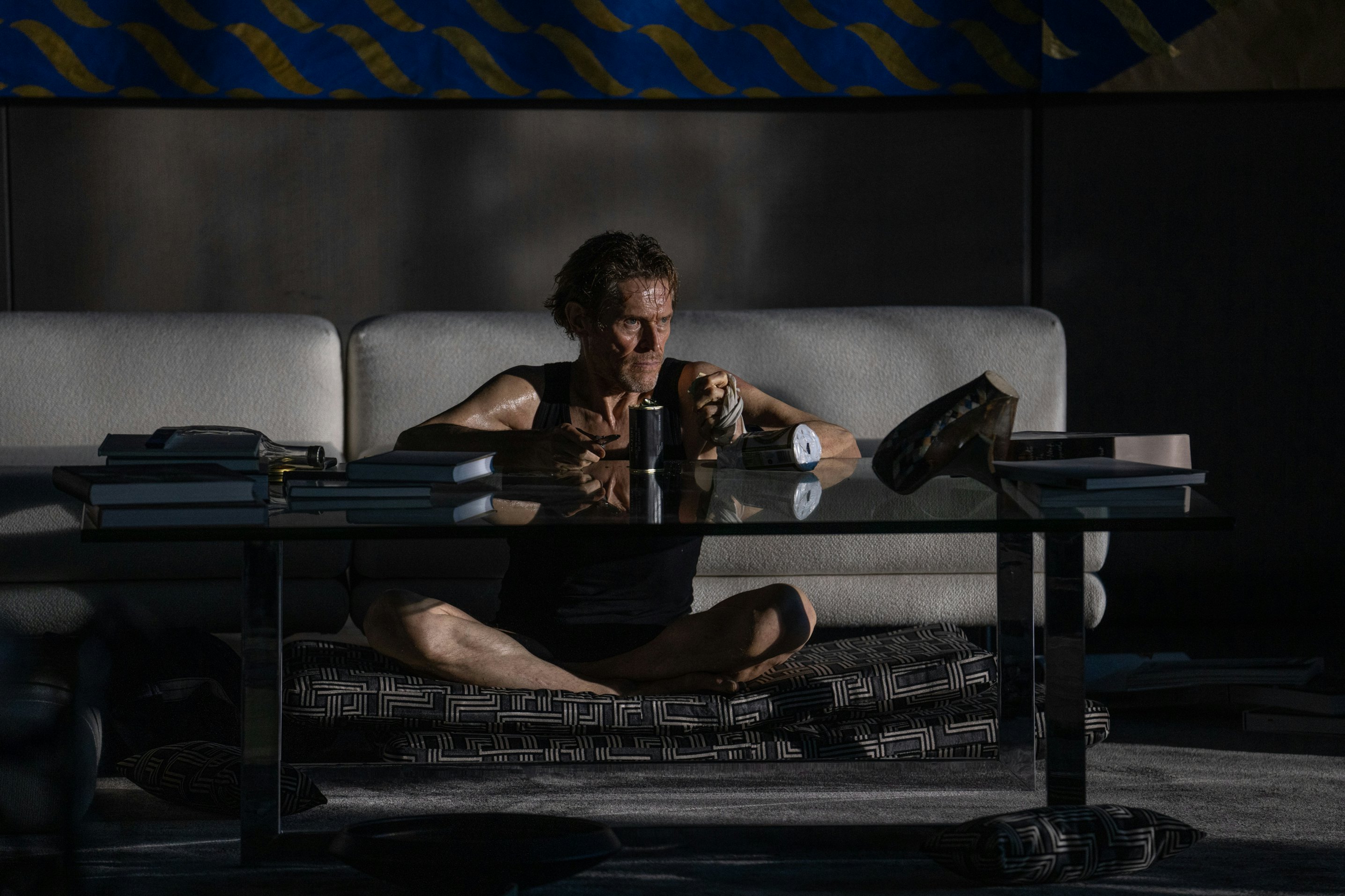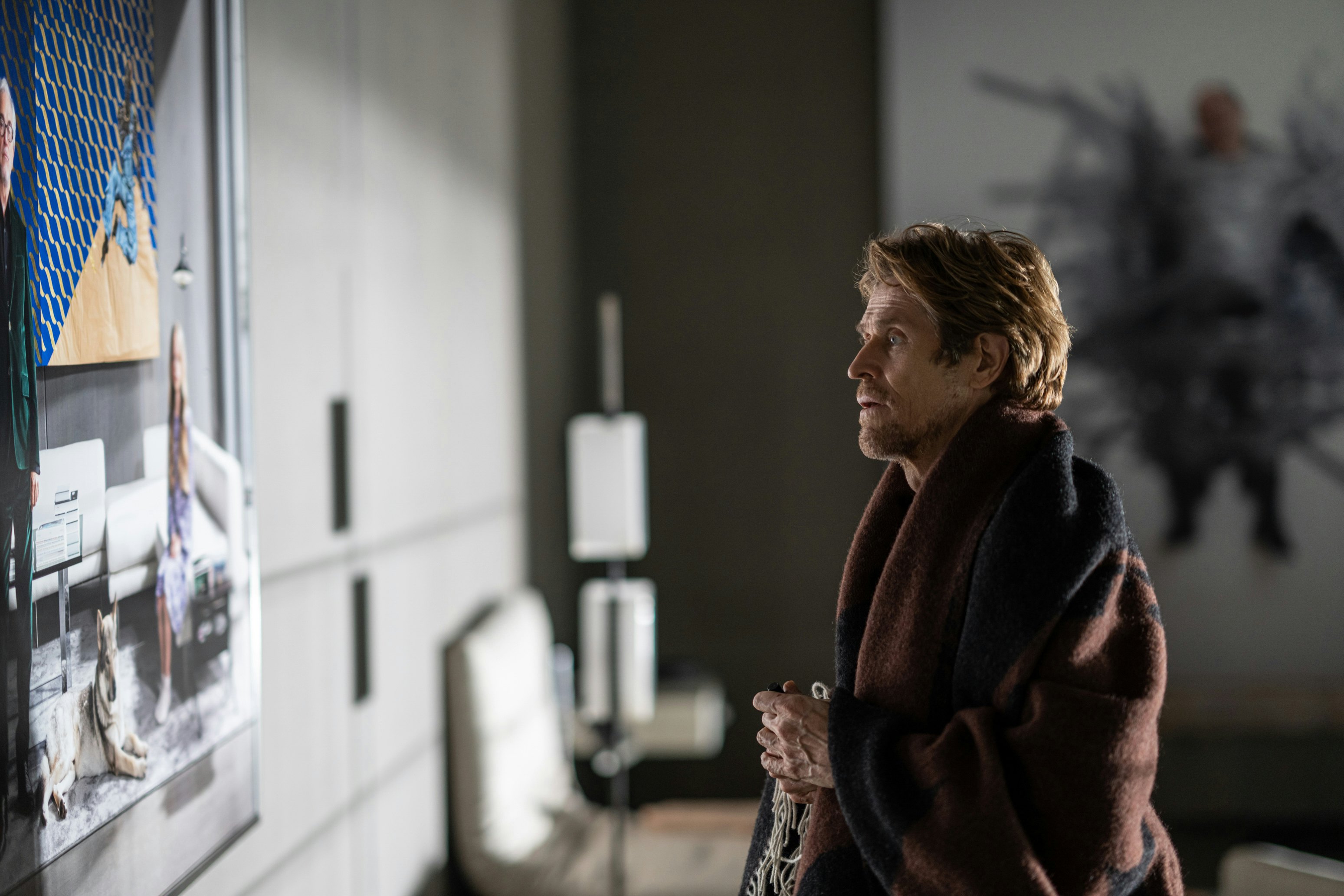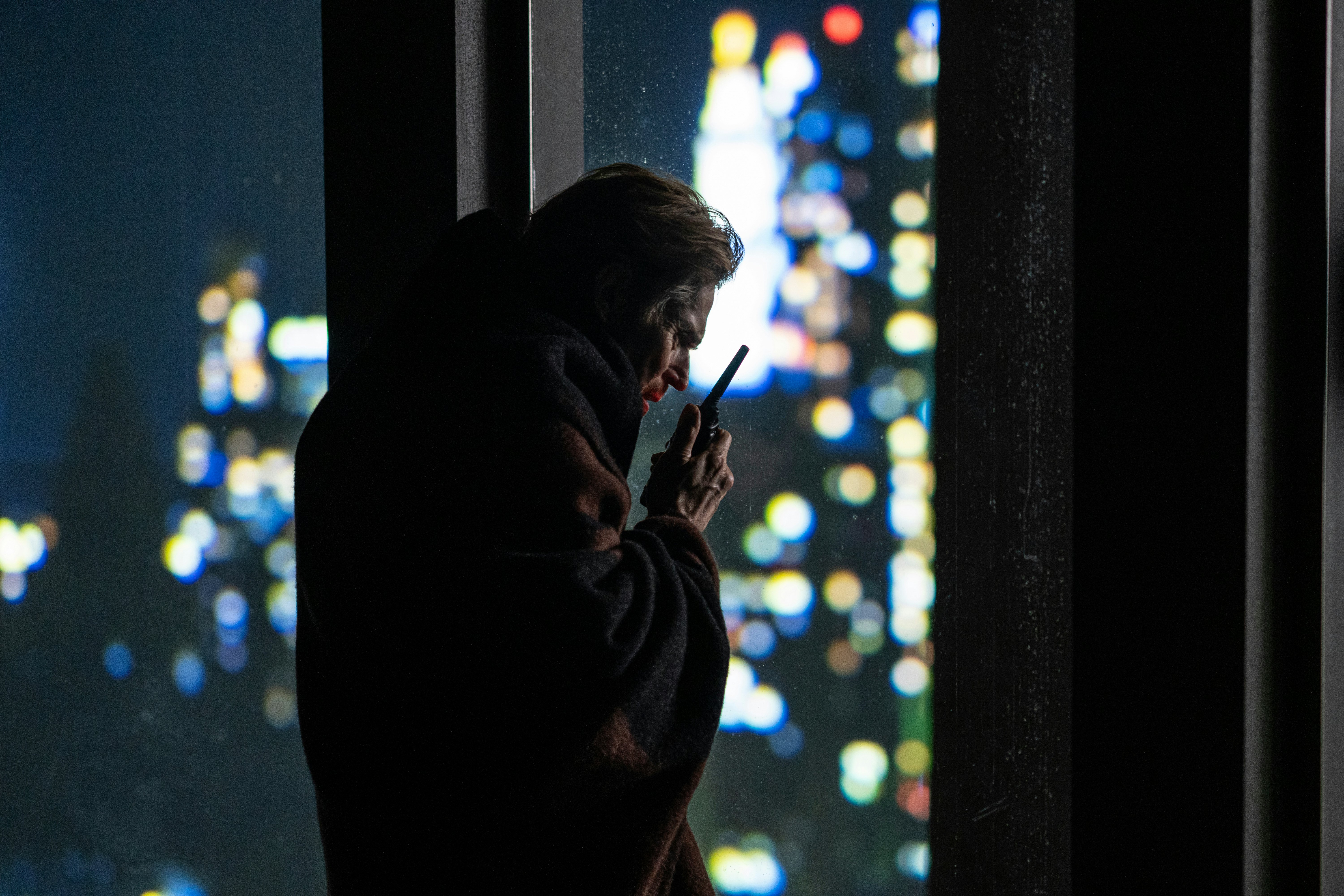
In the new psychological thriller Inside, Willem Dafoe is trapped in irony.
Locked in a towering New York City penthouse, a purgatory of modern art and architecture, the celebrated actor defecates in a drained pool and cooks tasteless exotic fish to eke out another day of survival. As director Vasilis Katsoupis concentrates the camera on a hardened mound of Dafoe’s poo piling in a minimalist luxury bathtub, Inside successfully makes its point: Wealth can’t always buy freedom. But then the minutes keep ticking, and you begin looking for your own way out of this relentless exercise in misery porn.
Katsoupis’ feature directorial debut, Inside is a novel experiment that makes for miserable viewing. It’s made all the more maddening by its belabored premise and unfocused themes. While Inside nobly gestures at trendy anti-rich sentiment and boasts onscreen visuals that maximize the movie’s elegant interior décor and lighting (yes, even the movie’s grossest parts are splendidly lit by cinematographer Steve Annis), it is woefully more concerned about challenging the viewer than telling a meaningful story. The saving grace is Dafoe, whose chilling charisma is the only inviting element to its claustrophobic 105-minute runtime.
Inside, penned by Ben Hopkins, traps Nemo (Dafoe), an art thief, in an apartment high-rise filled with priceless pieces and not much else. Left behind with an almost empty fridge, no running water, and a glitchy smart home oscillating extreme temperatures, Nemo lives off what he can in the hope that someone, or something, will get him out. It’s not a lockdown movie in the strictest sense. But I truly hope your 2020 didn’t look anything like this.

As a character-centric tale, Katsoupis’ film naturally ignores trivial matters like plot. Inside is a scenario picture that correctly believes it’s far more interesting to know how Nemo lives off the scarce supply of the absent wealthy than to see him escape through the roof. To its credit, Inside succeeds by creating a physical universe of art and artifice that is deliciously ironic. All these open-concept rooms and million-dollar paintings make for a beautiful prison, but it’s a prison nonetheless.
Inside is also wise to feature Dafoe as its central subject. He is truly the hero of the movie, delivering a performance that elevates Nemo from a blank slate into a realized soul. The star relishes his part with proven chameleonic ease that it becomes easy to forget Dafoe’s a smokescreen, tricking the viewer into seeing Inside as richer than it is. When Nemo succumbs to mania, such as when he hosts his own “cooking show,” we feel it too, hyper-aware of his (and our) weakening grasp of sanity.

But Dafoe alone cannot bring the movie to the finish line. The problem with Inside is that after its point is made, it makes it again and again. While Katsoupis successfully traps the audience in this ironic prison with Dafoe, the final film feels hostile and devoid of a point. At least the gross-out perversity of Pier Paolo Pasolini’s 1975 art horror Salò, or the 120 Days of Sodom — an infinitely more grotesque picture of similar themes — aided in its critique of the inhumane mega-rich. By contrast, Inside intentionally hides its affluent villains (save for a few stray surreal visions) to create a paranoid picture of the uber-rich’s looming omnipotence over us. But Inside is too ineffective to communicate these ideas meaningfully. Instead, it overly focuses on the bleak suffering of Dafoe’s character. And when cruelty is inflicted on an amoral figure like him, it’s hard to have sympathy.
Inside evangelizes against the wastefulness of wealth, but its gravest sin is feeling like a waste of time. It is far from the grossest picture one could ever see. But its de-evolution from an existential drama about man’s will to live into visual torture porn is a betrayal of its own ambitions. Strange how a movie can cut to a literal pile of crap and still feel like it doesn’t amount to even that.







